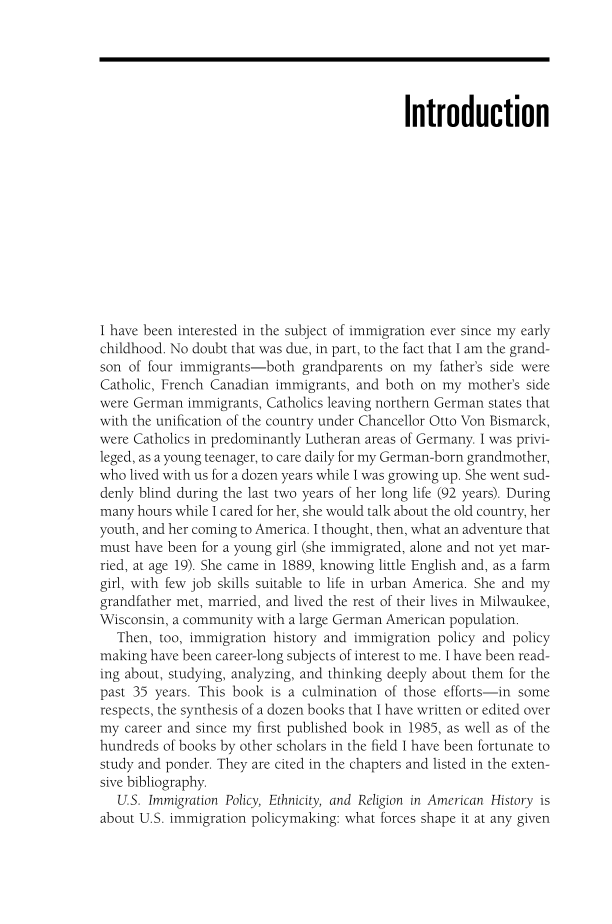Introduction I have been interested in the subject of immigration ever since my early childhood. No doubt that was due, in part, to the fact that I am the grand- son of four immigrants—both grandparents on my father’s side were Catholic, French Canadian immigrants, and both on my mother’s side were German immigrants, Catholics leaving northern German states that with the unifi cation of the country under Chancellor Otto Von Bismarck, were Catholics in predominantly Lutheran areas of Germany. I was privi- leged, as a young teenager, to care daily for my German-born grandmother, who lived with us for a dozen years while I was growing up. She went sud- denly blind during the last two years of her long life (92 years). During many hours while I cared for her, she would talk about the old country, her youth, and her coming to America. I thought, then, what an adventure that must have been for a young girl (she immigrated, alone and not yet mar- ried, at age 19). She came in 1889, knowing little English and, as a farm girl, with few job skills suitable to life in urban America. She and my grandfather met, married, and lived the rest of their lives in Milwaukee, Wisconsin, a community with a large German American population. Then, too, immigration history and immigration policy and policy making have been career-long subjects of interest to me. I have been read- ing about, studying, analyzing, and thinking deeply about them for the past 35 years. This book is a culmination of those efforts—in some respects, the synthesis of a dozen books that I have written or edited over my career and since my fi rst published book in 1985, as well as of the hundreds of books by other scholars in the fi eld I have been fortunate to study and ponder. They are cited in the chapters and listed in the exten- sive bibliography. U.S. Immigration Policy, Ethnicity, and Religion in American History is about U.S. immigration policymaking: what forces shape it at any given
Document Details My Account Print multiple pages
Print
You have printed 0 times in the last 24 hours.
Your print count will reset on at .
You may print 0 more time(s) before then.
You may print a maximum of 0 pages at a time.




































































































































































































































































































































